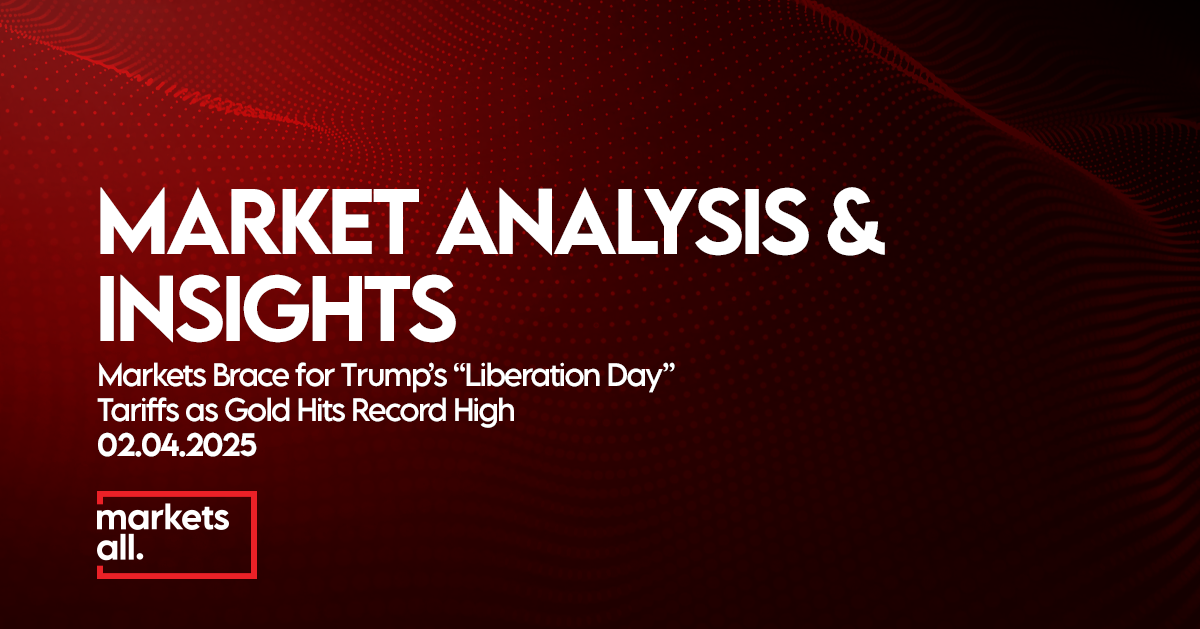United States
U.S. stock markets ended the session with mixed performances as investors cautiously awaited significant developments on the trade policy front. The financial world is closely watching President Donald Trump, who is expected to announce a new set of tariffs on April 2, a date he has provocatively named “Liberation Day.” This branding has further heightened anticipation, stirring uncertainty across equities and fixed income markets alike.
The benchmark S&P 500 index recorded a modest gain of 0.38%, closing at 5,632.45, reflecting selective investor optimism. In contrast, the Dow Jones Industrial Average remained nearly unchanged, slipping slightly by 0.03% to settle at 35,091.12, signaling a more cautious sentiment among traditional blue-chip investors. Meanwhile, the Nasdaq Composite, known for its heavy tech exposure, managed a 0.27% increase, finishing the session at 14,212.60. This divergence in performance among major indices highlights the nuanced investor reactions to the evolving geopolitical and economic backdrop.
In the U.S. bond market, Treasury yields remained stable, as investors refrained from taking large directional positions ahead of potential policy shifts. The yield on the 10-year U.S. Treasury held steady at 2.45%, suggesting that bond traders are adopting a wait-and-see approach. The fixed income market appears to be factoring in not only the potential economic consequences of new tariffs but also the broader implications for inflation expectations and Federal Reserve policy.
Europe
European stock markets posted moderate gains as investors assessed corporate earnings data alongside geopolitical risks emanating from global trade tensions. The pan-European STOXX 600 index, a broad gauge of European equities, rose by 0.6%, reflecting cautious optimism. Germany’s DAX, considered a barometer for the region’s industrial performance, advanced by 0.5%, while France’s CAC 40 outperformed, gaining 0.9% to close at 7,366.16.
The relative strength in European equities was underpinned by select sectors, including financials and industrials, which saw modest inflows from investors seeking value in a potentially volatile environment. However, market participants remain vigilant, particularly in light of the possible ripple effects stemming from the anticipated U.S. tariffs. European exporters, especially those in the automotive and manufacturing sectors, are viewed as vulnerable to protectionist trade policies that could disrupt global supply chains.
In bond markets, yields were largely flat. The yield on Germany’s 10-year Bund—a key benchmark for eurozone debt—remained unchanged at 0.35%. This stability suggests that investors are maintaining their exposure to safe-haven assets amid lingering economic and political uncertainties. Despite signs of resilience in equity markets, the fixed income space reflects underlying caution, especially as central banks weigh monetary policy paths in a fragmented global recovery.
Asia
Markets in China were closed due to the National Day holidays, limiting activity in the region and temporarily removing a major liquidity center from the global trading equation. Investors will closely monitor the Chinese market when it reopens later this week, particularly given the ongoing concerns about domestic economic growth, property sector risks, and potential reactions to external trade pressures.
Meanwhile, in Japan, the Nikkei 225 index declined by 0.4%, closing at 38,605.53. The market came under pressure as the Japanese yen continued to weaken, trading at 153.505 per U.S. dollar, raising concerns among investors about currency volatility and its impact on corporate earnings. A weaker yen typically benefits Japanese exporters by making their goods more competitive abroad, but it can also increase the cost of imports, potentially stoking inflation. The currency’s depreciation also reflects expectations around interest rate differentials between Japan and other major economies, particularly the United States.
Commodities and Cryptocurrency
Commodity markets remained in sharp focus as geopolitical risks and central bank policies continued to shape global demand dynamics.
Oil prices remained elevated, holding near five-week highs amid heightened geopolitical tension and signs of tightening supply. Brent crude, the international benchmark, rose to $74.86 per barrel, while West Texas Intermediate (WTI) crude climbed to $71.56. Traders are keeping a close eye on potential U.S. sanctions or military actions involving Russian oil exports, as well as the ongoing instability in the Middle East, particularly related to Iran. Any escalation in these regions could significantly disrupt global supply chains and send prices higher.
Gold, traditionally seen as a safe-haven asset during times of uncertainty, surged to a record high. Spot gold touched $3,148.88 per ounce before easing slightly to $3,113.43. The spike reflects increased investor demand for low-risk, tangible assets as market participants hedge against volatility in equities and potential fallout from the new U.S. tariff measures. Central bank buying, retail investment flows, and algorithmic trading momentum have all contributed to gold’s strong upward trajectory.
Bitcoin and the broader cryptocurrency market saw renewed buying interest. Bitcoin, the world’s largest cryptocurrency by market capitalization, climbed 3.15% to trade at $85,033.03. The rally is part of a broader trend in which digital assets are increasingly viewed as a hedge against traditional market instability and fiat currency depreciation. Institutional investors and retail traders alike are showing growing confidence in the long-term viability of decentralized financial systems, particularly as inflation and monetary policy uncertainty persist.
Emerging Markets – April 1, 2025
Emerging market equities registered gains amid improving investor sentiment and a slight increase in risk appetite. The MSCI Emerging Markets Index advanced by 0.9%, reflecting positive momentum in both Asian and Latin American economies.
The Latin American Index performed particularly well, rising 1.2%, bolstered by strength in Brazil and Mexico. These markets benefited from supportive commodity prices, stable monetary policy expectations, and improving macroeconomic indicators. Moreover, with developed market valuations appearing stretched, some global investors are rebalancing portfolios in favor of high-yield, high-growth regions.





Leave A Comment